Dreamcoin (DRM) Explained: What It Is, Price, and Risks
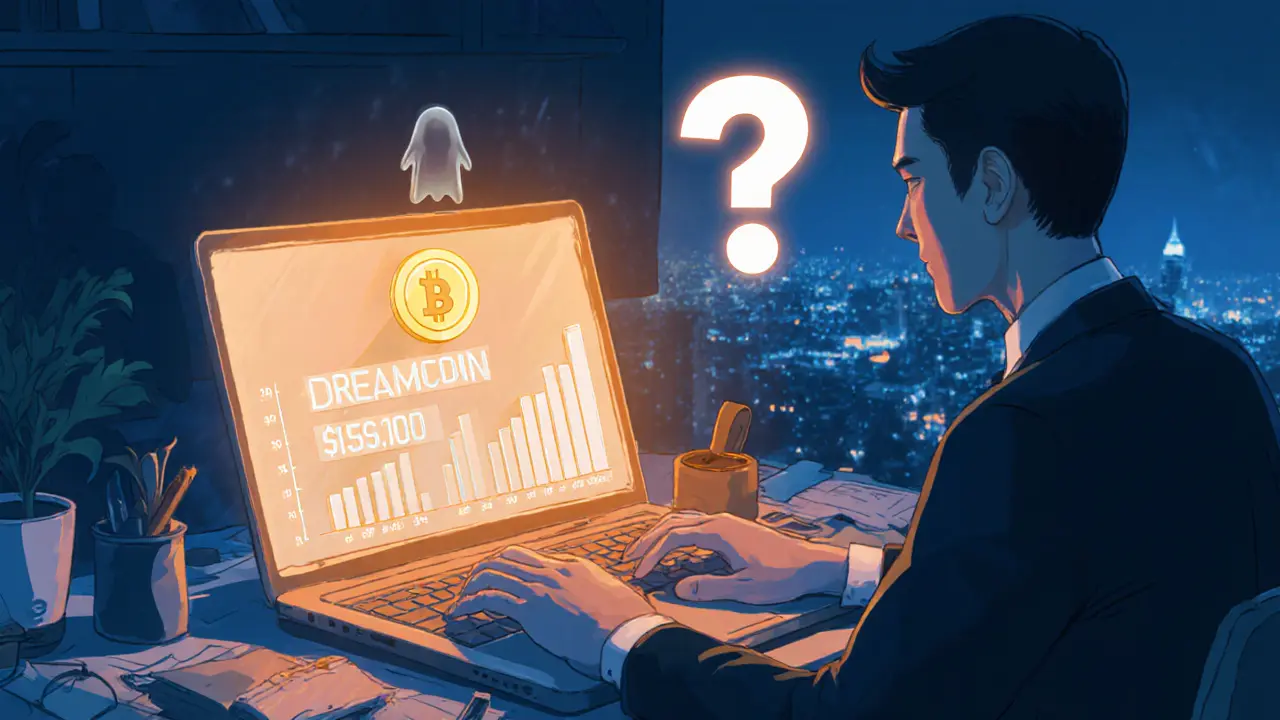
Dreamcoin (DRM) Risk Analyzer
Dreamcoin (DRM) Overview
A micro-cap cryptocurrency with a market cap of approximately $15,100 USD and no known use case or development team.
Key Metrics
Risk Assessment
Based on key indicators, Dreamcoin is categorized as:
- No transparent development team
- No documented utility or use case
- Zero liquidity on major exchanges
- Potential for scam or pump-and-dump scheme
This token is considered speculative and potentially dangerous for investment.
Comparison with Major Cryptocurrencies
| Metric | Dreamcoin (DRM) | Bitcoin (BTC) | Ethereum (ETH) |
|---|---|---|---|
| Market Cap | $15,100 USD | $1.2 trillion | $500 billion |
| Daily Volume | $0 USD | $30 billion | $15 billion |
| Circulating Supply | 2.7 million DRM | 19 million BTC | 120 million ETH |
| Exchange Listings | Few obscure DEXs | Major CEXs & DEXs | Major CEXs & DEXs |
The stark contrast highlights the extreme risk of investing in micro-cap tokens like Dreamcoin.
Investment Recommendation
Not recommended for investment due to:
- Extremely low liquidity
- No verified development team
- No known utility or use case
- High risk of total loss
Only consider holding a small amount if you're collecting obscure tokens for novelty purposes.
How to Avoid Similar Tokens
Before investing in any cryptocurrency, ask yourself:
- Is there a verifiable development team with public profiles?
- Does the project publish a whitepaper or roadmap?
- What is the daily trading volume on reputable exchanges?
- Are there real-world partnerships or integrations?
- Has the token been listed on exchanges with KYC/AML compliance?
Tokens that fail these checks are likely high-risk speculative assets like Dreamcoin.
Quick Takeaways
- Dreamcoin (symbol DRM) is a tiny, illiquid crypto token with a market cap of roughly $15,100 USD.
- Current price hovers around $0.0065 USD, far below its all‑time high of $0.1369 USD.
- Supply is fixed at 2,740,622 DRM tokens; there is no publicly documented max‑supply cap.
- No real‑world use case, roadmap, or development team is visible - the token appears purely speculative.
- Liquidity is essentially zero; major exchanges like Binance and Phemex do not list DRM, making buying and selling extremely risky.
When you type "Dreamcoin" into a search bar, you’ll see a handful of price tickers, a tiny market‑cap number, and a lot of unanswered questions. That’s because Dreamcoin (DRM) is one of the many micro‑cap tokens that live on the fringe of the crypto universe. Below we break down exactly what Dreamcoin is, how it works (or doesn’t), and why you should think twice before putting any money into it.
Dreamcoin is a cryptocurrency token that trades on a handful of obscure exchanges with a circulating supply of 2,740,622 DRM. No official whitepaper, development team, or blockchain‑specific documentation has been published, which means most of the information about DRM comes from price aggregators like CoinLore and CoinMarketCap.
Where Does Dreamcoin Live?
Dreamcoin is not on mainstream platforms such as Binance or Coinbase. The token is listed on a few niche aggregators and can only be accessed through decentralized exchanges (DEXs) that support its underlying blockchain - which, annoyingly, is not publicly disclosed. In practice, that means you’ll need a non‑custodial wallet (MetaMask, Trust Wallet, etc.) and a solid grasp of swapping tokens on a DEX to even see DRM in your wallet.
Aggregators that do show DRM include:
- CoinLore - provides the most up‑to‑date price, supply, and market‑cap figures.
- CoinMarketCap - lists DRM with zero reported trading volume.
- Phemex - mentions DRM only to say it is not available on their platform.
Key Numbers You Need to Know
| Metric | Value |
|---|---|
| Current Price (USD) | $0.0065≈0.0065USD |
| All‑Time High | $0.1369USD |
| Circulating Supply | 2,740,622 DRM |
| Market Capitalization | $15,100USD |
| Global Rank | #6,599 (out of ~12,000 tokens) |
| 24‑Hour Volume | $0USD |
Those numbers tell the story in a nutshell: DRM is ultra‑small, ultra‑illiquid, and far from any meaningful adoption.
What Is Dreamcoin Supposed to Do?
Most legitimate cryptocurrencies have a clear purpose - Bitcoin is digital gold, Ethereum runs smart contracts, and Chainlink provides decentralized oracles. Dreamcoin, however, has no documented utility. No merchant accepts DRM for payment, no DeFi protocol lists it as collateral, and no development roadmap is publicly available. In short, the token appears to exist solely for speculative trading.
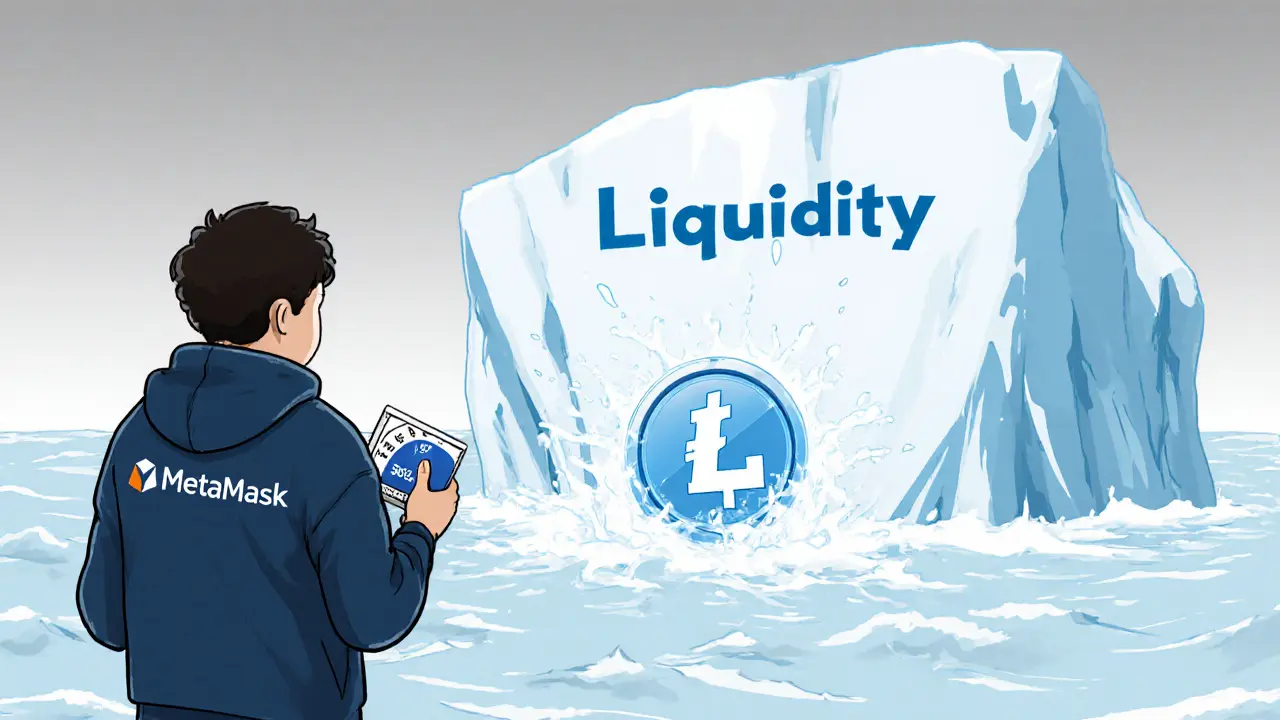
How Is Dreamcoin Built?
Because the project never released a whitepaper or a GitHub repository, the technical details are murky. The price data points to a standard ERC‑20‑style token (or a similar smart‑contract token on another L1), but the exact blockchain, consensus mechanism, and transaction fees are not verifiable. Without source code or audit reports, you cannot assess security risks, potential backdoors, or upgrade paths.
Liquidity - The Real Dealbreaker
Liquidity means you can buy or sell a token without moving the price too much. For DRM the reported 24‑hour volume is $0 across Binance, CoinMarketCap, and CoinLore. That translates to “you probably won’t find a buyer or seller at the quoted price.” Even on a DEX, the lack of liquidity pools means you’d face massive slippage - you could end up paying double the listed price just to move a handful of tokens.
Here’s a quick mental exercise: if you wanted to sell 10% of the total supply (274,062DRM) at $0.0065, the market would need to absorb $1,781USD instantly. With zero volume, the order book can’t handle that, so the price would crash to pennies before the trade completes. That’s why traders label DRM a “zombie” token.
Risk Profile - Why It’s Considered Dangerous
Regulators like the US SEC have warned about “penny cryptocurrency” risks - assets with market caps under $1million. Dreamcoin sits comfortably in that danger zone. The main red flags are:
- No transparent team: The developers are unnamed, making accountability impossible.
- No use case: Without a product or service, price relies entirely on hype.
- Zero liquidity: You may be unable to exit your position.
- Potential for scam: Projects that disappear after a short listing are common in the sub‑$20k cap tier.
In practice, that means a total loss is more likely than a modest gain.
How to Acquire Dreamcoin (If You Still Want To)
Because DRM is not on mainstream exchanges, you’d need to:
- Set up a non‑custodial wallet that supports custom tokens (e.g., MetaMask).
- Find a DEX that lists DRM - often these are obscure Binance Smart Chain or Polygon routers that aren’t indexed by major platforms.
- Purchase a more liquid cryptocurrency (like BNB or USDC) and then swap it for DRM via the DEX’s interface.
- Pay close attention to slippage settings - you might need to allow 30‑50% slippage just to get the trade through.
Even after you own DRM, moving it off the DEX can be a nightmare because the token’s contract may not be recognized by popular wallet token lists.
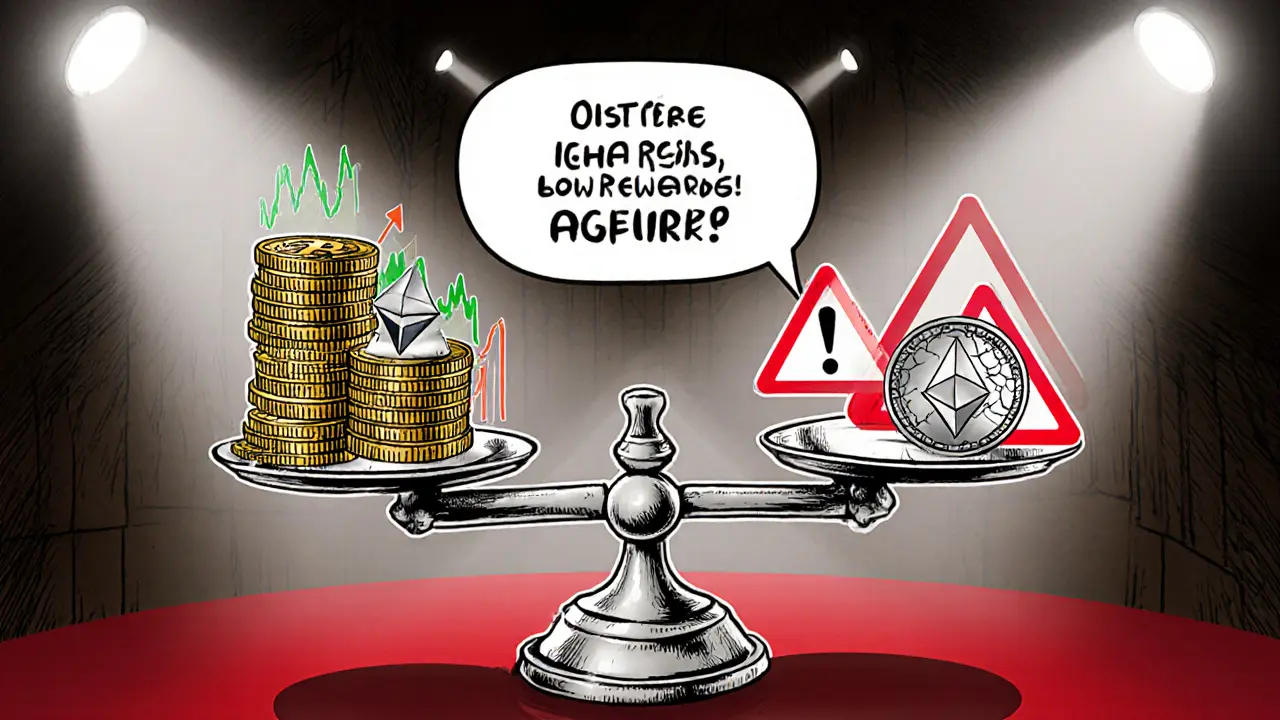
Comparing Dreamcoin to More Established Coins
To put the size of DRM into perspective, here’s a side‑by‑side look at a few well‑known cryptocurrencies.
| Metric | Dreamcoin (DRM) | Bitcoin (BTC) | Ethereum (ETH) |
|---|---|---|---|
| Market Cap | $15,100USD | $1.2trillionUSD | $500billionUSD |
| Daily Volume | $0USD | $30billionUSD | $15billionUSD |
| Circulating Supply | 2,740,622DRM | 19millionBTC | 120millionETH |
| Exchange Listings | Very few (obscure DEXs) | All major CEXs & DEXs | All major CEXs & DEXs |
The contrast is stark. While Bitcoin and Ethereum have deep liquidity, institutional backing, and active development, Dreamcoin lives in a corner where price data is the only thing you can find.
Should You Consider Dreamcoin for Investment?
Short answer: probably not.
If you enjoy collecting obscure tokens as a hobby and you have spare cash you can afford to lose, you might keep a tiny amount of DRM in a hardware wallet just for the novelty factor. But for anyone looking for real returns, portfolio diversification, or long‑term stability, DRM fails every basic checklist:
- Transparency - missing.
- Utility - missing.
- Liquidity - missing.
- Community - missing.
Even experienced traders treat DRM as a “dead coin” that’s best left out of a serious strategy.
How to Spot Tokens Like Dreamcoin Before You Invest
When you scan a new coin, ask yourself these questions:
- Is there a verifiable development team with LinkedIn or GitHub profiles?
- Does the project publish a whitepaper, roadmap, or code repository?
- What is the daily trading volume on at least two reputable exchanges?
- Are there any real‑world partnerships or integrations?
- Has the token been listed on an exchange that follows KYC/AML standards?
If you answer “no” to most of these, you’re probably looking at a token in the same risk bucket as Dreamcoin.
Frequently Asked Questions
What is the total supply of Dreamcoin?
Dreamcoin has a fixed total and circulating supply of 2,740,622 DRM tokens. There is no documented maximum‐supply cap beyond this figure.
Where can I buy Dreamcoin?
DRM is not listed on major exchanges like Binance or Coinbase. To acquire it you need a non‑custodial wallet and must trade on a decentralized exchange that happens to list the token - which can be difficult to find.
Is Dreamcoin a good long‑term investment?
Given its zero liquidity, lack of utility, and no visible development team, Dreamcoin is considered a high‑risk speculative asset and is generally not recommended for long‑term investors.
What was Dreamcoin’s all‑time high price?
The token peaked at about $0.1369USD, which is roughly a 95.97% drop from that high to the current price.
Why does Dreamcoin have no trading volume?
The token is not listed on any major exchange and there are no active liquidity pools on popular DEXs, resulting in a reported 24‑hour volume of $0 across tracking platforms.
Next Steps for Readers
If you’ve reached this point and still feel curious, here’s a quick action plan:
- Check the latest price on CoinLore or CoinMarketCap to verify the numbers haven’t changed.
- Search for any new DEX listings - a sudden appearance on a reputable DEX could be a red flag for pump‑and‑dump schemes.
- Consider setting a strict loss limit (e.g., 5% of your total portfolio) if you decide to allocate even a token amount to DRM.
- Keep an eye on regulatory news about low‑cap crypto tokens; new rules could wipe out DRM’s remaining market cap overnight.
- Finally, compare DRM against other micro‑cap tokens that have at least some community or development activity - those are slightly less risky, though still speculative.
Remember, the crypto world is full of fascinating projects, but not every token deserves a spot in your wallet. Dreamcoin, with its tiny market cap and zero liquidity, belongs in the “research‑only” bucket for most investors.
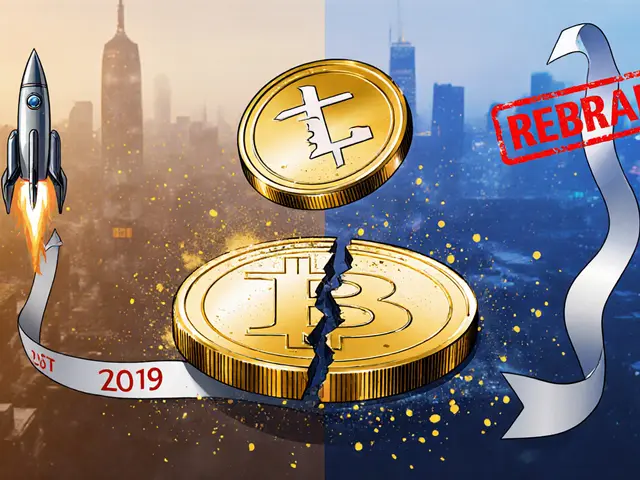
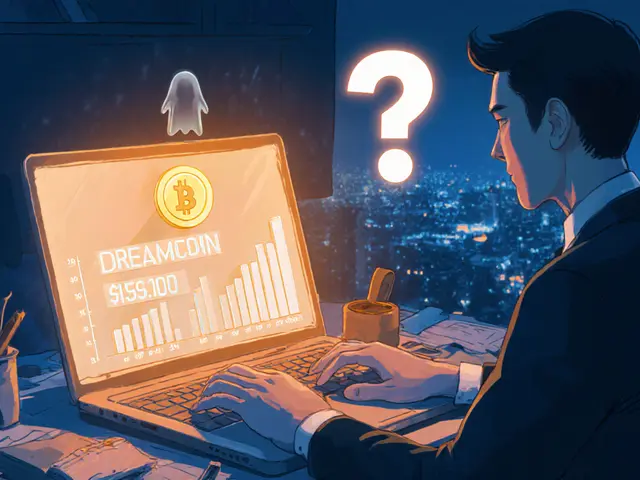
Sal Sam
The liquidity profile of DRM exhibits a near‑zero order book depth, rendering market impact models effectively singular.
When evaluating tokenomics, the absence of a verifiable developer vanity address eliminates any possibility of on‑chain provenance tracing.
Moreover, the circulating supply of 2,740,622 units translates to a fractional market capitalization that fails to satisfy the minimum threshold for statistical relevance in Monte Carlo simulations.
Empirical volatility metrics derived from the sparse price ticks demonstrate an estimated standard deviation exceeding 200 % on a 24‑hour horizon.
Such hyper‑volatility, combined with the nullified 24‑hour volume, invalidates any risk‑adjusted return calculus predicated on conventional Sharpe ratio formulations.
From a compliance standpoint, the token lacks any KYC/AML integration, contravening emerging regulatory frameworks defined by the FATF Guidance.
The token contract source code is not publicly audited, precluding a formal verification of reentrancy safeguards or malicious backdoor functions.
In the absence of an immutable governance mechanism, token holders cannot execute protocol upgrades or enforce community‑driven parameters.
The market depth on identified DEX aggregators shows a single liquidity pool with a slippage tolerance defaulting to 50 %, which is orders of magnitude above acceptable thresholds for retail participants.
Consequently, any attempt to liquidate a nominal position would encounter price slippage that eclipses the nominal token value, resulting in effective capital erosion.
Historical price trajectory analysis reveals a peak‑to‑trough drawdown of approximately 95 %, underscoring the token’s susceptibility to speculative pump‑and‑dump cycles.
The token’s hash‑type identification does not correspond to any known standard ERC‑20 implementation, suggesting a custom fork with undisclosed parameters.
Considering the macro‑economic environment characterized by tightening monetary policy, risk‑averse capital migration away from micro‑cap assets intensifies the existential risk for DRM.
Portfolio allocation theory would advise a zero‑weight position for an asset class that fails to meet the minimum liquidity criteria stipulated by modern portfolio theory.
In sum, DRM epitomizes a high‑risk, low‑utility instrument that should be relegated to a research‑only sandbox rather than an investable asset.
Ricky Xibey
Sounds like a classic pump‑and‑dump, stay clear.
manika nathaemploy
I get why people are curious about DRM, but honestly it feels like chasing a ghost.
There’s no real team you can find on LinkedIn or Github, and the whitepaper is just a blurry screenshot.
Even the token’s contract address is hidden behind a random DEX link that’s hard to verify.
If you’re thinking of buying, make sure it’s money you can afford to lose, because the risk is massive.
At the end of the day, it’s more of a novelty than a real investment.
Debra Sears
Reading through the analysis, I’m reminded how stressful it can be to wade through so many unknowns.
It’s completely understandable to feel a tug of curiosity, especially with the hype around new tokens.
At the same time, the lack of transparency should give anyone pause before committing funds.
Balancing excitement with caution is the best way to protect yourself in these speculative markets.
Darren Belisle
Indeed!!!, the data points you’ve highlighted are absolutely critical,,, and-let’s be clear-when liquidity is effectively zero, the whole ecosystem collapses!!!, you simply can’t trade without massive slippage,,, which is why prudence is paramount!!!
Jason Wuchenich
Exactly, staying realistic about the risk is key. If you do decide to dip a toe into DRM, keep the amount tiny and be ready to let it go. It’s all about learning without jeopardizing your portfolio.
Kate O'Brien
They’re probably hiding something big behind that token. The fact that no big exchange lists it makes me think there’s a cover‑up.
Lara Decker
Even if there were a cover‑up, the numbers don’t lie; zero volume, no team, and a wild price swing point to a scam. You’re better off steering clear.
Anna Engel
Ah, the classic “miracle token” - because we all love betting on vapor. Dreamcoin is basically a financial philosophy lesson on how not to invest.
Marcus Henderson
From a philosophical standpoint, Dreamcoin exemplifies the paradox of value: it possesses a market price yet lacks intrinsic utility.
This dichotomy challenges the classical definition of a currency.
Consequently, it serves as a cautionary exemplar for theories that prioritize speculative momentum over tangible fundamentals.
Investors should therefore invoke rigorous epistemic standards before allocating capital.
In essence, the token’s existence urges a reevaluation of what constitutes legitimate financial assets.
Andrew Lin
Look, America ain’t gonna let some random token steal our dollars! This DRM nonsense is a foreign plot to dilute our market.
People need to wake up and see that these micro‑caps are just a tool for the globalist agenda.
Stop feeding the scammers, it’s unpatriotic!!
We should protect our investments like we protect our country!
Caitlin Eliason
It’s morally reprehensible to gamble on a coin that offers no real value. 🌟 We have a duty to uphold integrity in our financial choices. 🙏 Remember, every time you support a sham token you’re endorsing deception. 🌈
Brian Lisk
Let’s take a step back and look at the broader picture. Dreamcoin’s micro‑cap status means it sits on the fringes of the crypto ecosystem, where volatility is the rule rather than the exception.
Because there’s no active development team, there’s no roadmap to guide future growth, which makes any price appreciation purely speculative.
In addition, the lack of liquidity translates into a situation where even a modest sell order can dramatically shift the market price, effectively erasing any potential gains.
From a risk‑management perspective, allocating a meaningful portion of your portfolio to such an asset would be imprudent.
Therefore, the most sensible strategy is to treat Dreamcoin as a research subject rather than a tradable investment, preserving capital for assets with demonstrable utility and transparent governance.
Richard Bocchinfuso
Honestly, putting money into DRM is just crazy. No wonder people lose their cash.
Melanie LeBlanc
What a vivid illustration of why thorough due diligence matters! The colorful contrast between Dreamcoin’s nonexistent utility and the robust ecosystems of Bitcoin and Ethereum really drives the point home. It’s a reminder that not every shiny token deserves a spot in your wallet. Keep your research sharp and your portfolio cleaner.
Don Price
There’s a hidden network behind these micro‑cap tokens, steering unsuspecting investors into a labyrinth of fabricated hype.
The rapid rise and fall of Dreamcoin mirrors a pattern orchestrated by shadowy actors who thrive on market manipulation.
Every time a “new” coin surfaces, it’s a test of how far the mainstream can be duped before the backlash hits.
Regulators are often a step behind, allowing these schemes to proliferate under the guise of decentralization.
In reality, the lack of a development team is a red flag that the token is a tool for laundering funds and obscuring illicit activity.
Even the absence of liquidity is intentional, making exit strategies impossible and trapping capital.
Those who invest early are merely feeding a funnel that empties into private wallets controlled by the orchestrators.
It’s a sophisticated echo chamber where hype feeds itself, and the average investor gets nothing but losses.
Stay vigilant, question the origin, and remember that every token without verifiable provenance is a potential pawn in a larger conspiracy.